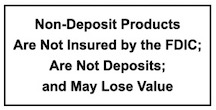Financial Literacy Month
5 Things You Should Do To Check Your Financial Health
April is Financial Literacy Month. At Security State Bank, financial literacy is a topic we feel very strongly about. To us, we want to raise awareness about the importance of financial education. We are dedicated to providing you with the skills and knowledge to effectively manage your finances every day.
Below is a list of some things you can do to help ensure your finances are in top shape.
REVIEW YOUR CREDIT REPORT
Taking a thorough look at your credit report is the perfect place to start.
Checking your credit report at least once a year is a good practice. It can help assure you that your credit is healthy and help you detect any inaccurate or incomplete information.
You can request a free copy of your credit report from the three major credit bureaus every 12 months here.
CHECK YOUR CREDIT SCORE
After you’ve reviewed your credit report, you should check your credit score.
A credit score is a number from 300 to 850 that rates a consumer’s creditworthiness. The higher the score, the better a borrower looks to potential bankers.
A credit score is based on credit history, open accounts, total levels of debt, repayment, and other factors. Banks use credit scores to evaluate the probability that an individual will repay loans in a timely manner.
Once you know where you stand, you can make informed choices that can help improve or maintain your score.
DO AN AUDIT OF YOUR EXPENSES
Understanding these basics of what is coming in and what is going out will allow you to become more mindful of your spending in an effort to ensure your money is going exactly where you want it go – with more thought and intention. Take this opportunity to use a spend tracker tool that can provide clarity around your spending habits and can help you make decisions to meet your financial goals. Once you have a clear idea of how you spend your money, you’ll be ready to start building a budget.
CHECK YOUR SAVINGS AND START AN EMERGENCY FUND
If you face an unexpected financial emergency, do you have the money you need to cover it or loss of income? If you don’t, you’re not alone.
Having an emergency fund available can help you get through these moments as well as help you maintain your financial wellness. Here’s how to build an emergency fund and when you should use it.
What is an Emergency Fund?
An emergency fund is money you set aside for unexpected events such as a job loss, medical problem, or car breakdown. Experts recommend having three to six months’ worth of living expenses saved in an emergency fund.
Steps to Start and Maintain an Emergency Fund
- Set several smaller savings goals, rather than one large one. Set yourself up for success from the start. …
- Start with small, regular contributions. …
- Automate your savings. …
- Don’t increase monthly spending or open new credit cards. …
- Don’t over-save.
CREATE A NEW BUDGET
Now that you’ve done a pretty good review of your financial health, take what you’ve learned and use to it to create a new budget. It’s likely during your review you developed some new financial goals. Maybe you want to improve your credit score or start saving money. Set your budget to meet those goals. A budget can help you feel in control and give you a roadmap for how much money you can spend each month.





